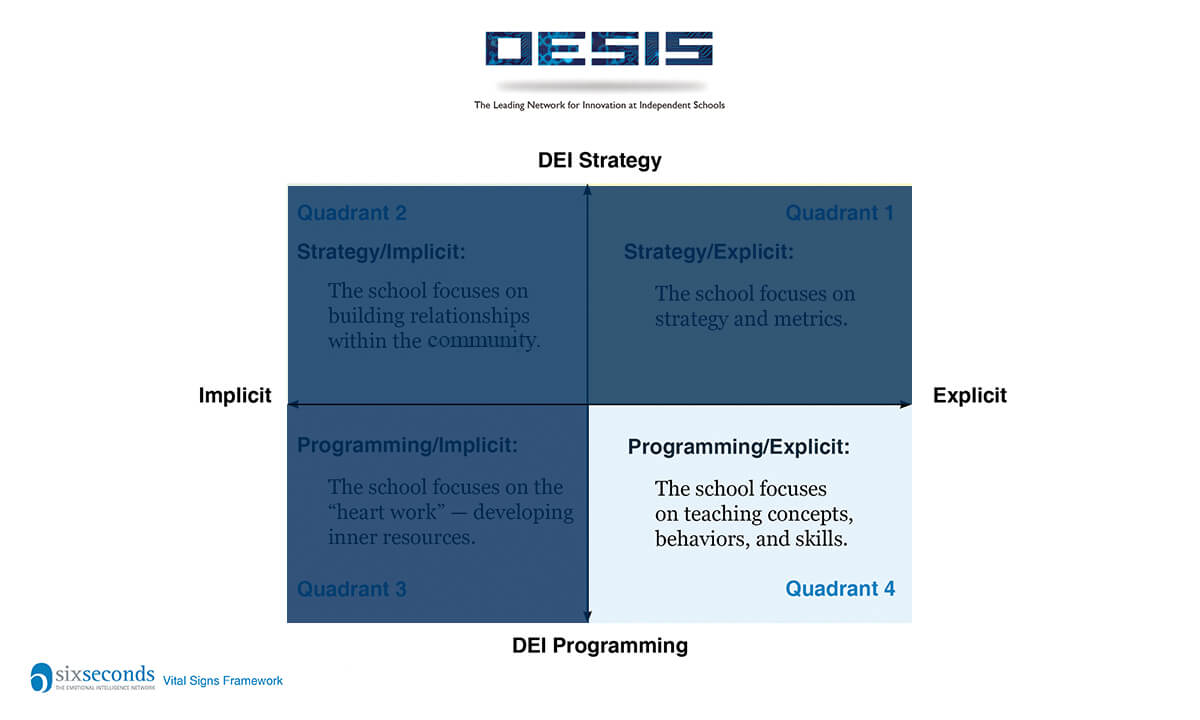In the previous segments of this series, we framed the challenges for a systemic approach to DEI considering the visible & invisible parts of this work. The goal is a framework for planning and implementing the work so we make substantial & sustainable progress toward greater equity. Read the framing of the approach here, and then here are the links to the descriptions of Quadrant 1 (strategic+explicit), Quadrant 2 (strategic-implicit), Quadrant 3 (programmatic-implicit). Now we will delve into the visible & programmatic implementation of programs.
You’ve started a plan and built alignment. People are open enough to do this work. What’s next? Quadrant 4 is the most actionable and visible part of this framework; as such, it is the most public portion of your DEI initiative. Note that the success of these programs will be very much dependent on the successful completion of work in the first three quadrants. If this visible, actionable work is well-supported by the other quadrants, your DEI programming will have a significant impact for your community.
Quadrant 4
Programming/Explicit: In this zone, the work is about teaching concepts, behaviors, vocabulary, and/or re-enforcing equitable norms.
Key elements: Ethnic,…


